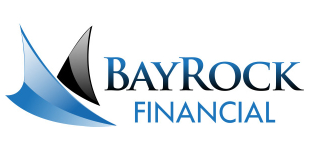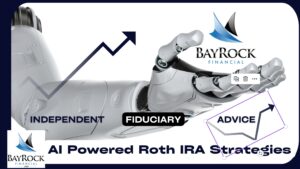Backdoor Roth IRA Contribution
Can I Make A Backdoor Roth IRA Contribution? If you earn too much, you are unable to make a regular contribution to a Roth IRA. But, there is a workaround called the Backdoor Roth Contribution. There are many factors and rules that must be considered, and complicated steps to take in order to properly implement this strategy, without penalty.
Instant Download Link for Can I Make A Backdoor Roth IRA Contribution
Backdoor Roth IRA Contribution Overview

Backdoor Roth IRA Contribution or Roth 401k



B


To help make the analysis easier, we have created the “Can I Make a Backdoor Roth IRA Contribution” flowchart. It addresses key considerations, including:
-
Multiple retirement accounts
-
Pro-rata and aggregation rules
-
Step-transaction doctrine
-
Step-by-step process for making a Backdoor Roth Contribution
Download: Can I Make A Backdoor Roth IRA Contribution
Backdoor Roth IRA: Advantages and Tax Implications Explained
By Investopedia / Jessica Olah

Investopedia / Jessica Olah
What Is a Backdoor Roth IRA?
A backdoor Roth IRA is a strategy rather than an official type of individual retirement account. It is a technique used by high-income earners—who exceed Roth IRA income limits—to convert their traditional IRA to a Roth IRA.
The backdoor Roth IRA strategy is not a tax dodge. When you transfer the assets of a traditional IRA to a Roth IRA, you owe taxes on any funds—the principal, earnings, and appreciation—that have not been taxed previously.1
If the IRA has been funded solely with tax-deductible contributions, then the entire value of the transferred assets will be taxed;1 however, as with any Roth IRA, if you follow the rules, you should owe no further taxes when you make withdrawals.
Key Takeaways
-
The backdoor Roth IRA is a strategy used by high earners for converting a traditional IRA to a Roth IRA.
-
Using this strategy, you can contribute to an IRA and roll them over to a Roth IRA or convert an entire IRA to a Roth.
-
The backdoor Roth IRA strategy is a legal way to get around the income limits that usually prevent high earners from owning Roth IRAs.
-
The backdoor Roth IRA strategy is not a tax dodge—in fact, it may incur higher taxes when it’s established—but you’ll get the future tax savings of a Roth account.
-
The backdoor Roth IRA strategy is also beneficial for someone who anticipates having funds leftover in their traditional IRA because they can pass the money on to their heirs in a Roth IRA.
Understanding Backdoor Roth IRAs
A Roth IRA allows taxpayers to set aside a few thousand dollars from their annual earnings in a retirement savings account. The contributed money is after-tax dollars—meaning the funds are earnings that have been taxed in the year when they are contributed to the Roth IRA.
Roth vs. Traditional
A Roth IRA differs from a traditional IRA. The traditional IRA gives the earner an immediate tax break because they can take a tax deduction for their contributions in the year they are made, and no taxes are due until the money is withdrawn. When withdrawals are made, usually after retirement, the account holder will owe taxes on both the dollars invested and their earnings.
The problem for high-income taxpayers is that individuals who earn above a certain amount aren’t allowed to open or fund Roth IRAs. If your modified adjusted gross income (MAGI) exceeds statutory ceilings, then the law starts phasing out the amount that you can contribute—between $129,000 and $144,000 for single filers and $204,000 and $214,000 for joint filers in 2022.
For 2023, the ranges are between $138,000 and $153,000 for single filers and $218,000 and $228,000 for joint filers. Once your annual income exceeds a specified threshold, you cannot participate at all—$214,000 ($228,000 in 2023) for joint filers and $144,000 ($153,000 in 2023) for single filers.
Traditional IRAs don’t have income ceilings for participation. And, since 2010, the Internal Revenue Service (IRS) hasn’t had income limits that restrict who can convert a traditional IRA to a Roth IRA. As a result, the backdoor Roth IRA has become a tax-planning opportunity for higher-income taxpayers who ordinarily couldn’t contribute to a Roth IRA.
The way that backdoor Roth IRAs work has changed over the years. Although IRA funds that were transferred to Roth IRAs in pre-2018 conversions could be recharacterized as traditional IRA contributions before 2018, the Tax Cuts and Jobs Act (TCJA) of 2017 banned the strategy of recharacterizing converted funds in a Roth IRA back to a traditional IRA contribution in conversions enacted after Dec. 31, 2017.1
Some taxpayers who are ineligible to deduct IRA contributions use after-tax dollars to fund a traditional IRA and pay taxes again when withdrawing from the account just to have an IRA.
How to Create a Backdoor Roth IRA
You can create a backdoor Roth IRA in one of three ways:
-
Contribute money to an existing traditional IRA and then roll over the funds to a Roth IRA. Or you can roll over existing traditional IRA money into a Roth—as much as you want at one time, even if it’s more than the annual contribution limit.
-
Convert your entire traditional IRA to a Roth IRA.
-
If your company 401(k) plan allows conversions, you can roll your 401(k) account over to a Roth IRA.1
The custodial bank or brokerage for your IRA should be able to help you with the mechanics. If you have an employer-managed plan, you can contact the financial services firm that manages it to learn if your plan provides this opportunity.
Tax Implications of a Backdoor Roth IRA
Remember that in an IRA transfer or conversion to a Roth IRA, you still need to pay taxes on any money in your traditional IRA that hasn’t been taxed.1
For example, if you contribute $6,000 to a traditional IRA, claim a deduction for the $6,000 on your tax return, and then convert that money to a Roth IRA, you’ll owe taxes on the $6,000.
You’ll also owe taxes on whatever money that IRA contribution earned between the date when it was contributed to the traditional IRA and the date when you converted it to a Roth IRA.1
If you make after-tax contributions to a traditional IRA—that is, contribute funds that are nondeductible and taxable that year—these amounts will not be taxed on their transfer to the Roth IRA.7
But if most of your IRA contributions were deducted from your income, and if your IRA has accumulated earnings or made investments that have appreciated over a long period, then most of the funds and investments that you convert to a Roth IRA likely will count as taxable income at the time of the conversion. That could kick you into a higher tax bracket that year; however, you may not have to pay tax on all the money; a pro-rata rule applies to prevent taxing the amounts attributable to after-tax contributions.7
Also, the funds that you put into the Roth are considered converted funds, not contributions. That means you must wait five years for penalty-free access to your funds in your backdoor Roth IRA if you’re under age 59½. These converted funds differ from regular Roth IRA contributions, which can be withdrawn anytime without taxes or penalties.8
On the positive side, a backdoor Roth IRA lets you get around the income and contribution limits that apply to traditional Roth IRAs:
-
Roth IRA Income Limits: For 2022, if your MAGI is $144,000 ($153,000 in 2023) or higher and you’re single (or $214,000 [$228,000 in 2023] or higher and you’re married filing jointly or a qualifying widow or widower), then you can’t contribute to a traditional Roth IRA. These limits don’t apply to backdoor Roth IRA conversions.54
-
Roth IRA Contribution Limits: For 2022, you can contribute $6,000 yearly (or $7,000 if you are 50 or older) to a traditional Roth IRA. For 2023, you can contribute $6,500 yearly (or $7,500 if you are 50 or older).59
With a backdoor Roth IRA conversion, these limits don’t apply.
Benefits of a Backdoor Roth IRA
Aside from getting around the limits, why would taxpayers want to take the extra steps involved in doing the backdoor Roth IRA dance? There are several good reasons.
For one thing, Roth IRAs don’t have required minimum distributions (RMDs), which means that account balances can create tax-deferred growth for as long as the account holder is alive. You can take out as much or as little as you want, whenever you want, or you can leave it all for your heirs.8
Another reason is that a backdoor Roth contribution can mean significant tax savings over decades because Roth IRA distributions, unlike traditional IRA distributions, are not taxable.
The main advantage of a backdoor Roth IRA—as with Roth IRAs in general—is that you pay taxes upfront on your converted pretax funds, and everything after that is tax-free. This tax benefit is greatest if you think that tax rates will rise in the future or that your taxable income will be higher in the years after your backdoor Roth IRA is established than it is now—especially if you plan to withdraw after a distant retirement date.
Frequently Asked Questions
Is a Backdoor Roth Still Allowed in 2022?
Under present law, a backdoor Roth individual retirement account (IRA) is legally permissible and respected by the Internal Revenue Service (IRS), provided that tax law requirements are met.
Is a Backdoor Roth a Good Idea?
The backdoor Roth strategy can be beneficial if you earn too much to contribute to a Roth IRA or if you’ve determined that a Roth IRA is better for your retirement.
Do You Pay Taxes Twice on a Backdoor Roth IRA?
Traditional IRA contributions are tax-deferred until withdrawals are taken. When you convert your IRA to a Roth IRA, you pay taxes on your contributions and capital gains. When you withdraw from your Roth, there are no taxes because you’ve already paid them.3 So you only pay taxes once using the backdoor Roth IRA strategy.






